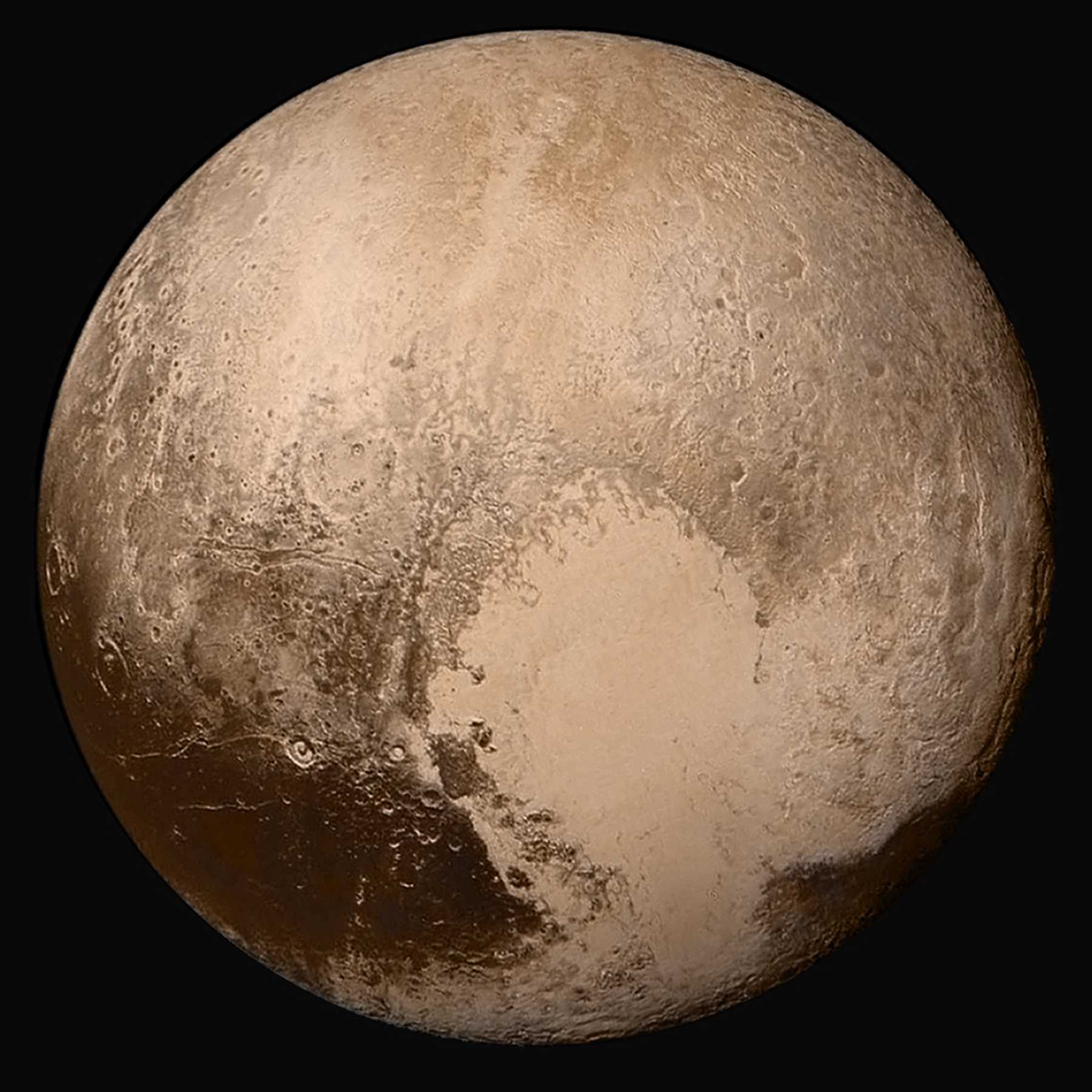 NATIONAL HARBOR, Md. – A NASA spacecraft has discovered what appear to be ice-spewing volcanoes on the surface of Pluto, puzzling scientists who believed the distant world was old, dead, and dormant.
NATIONAL HARBOR, Md. – A NASA spacecraft has discovered what appear to be ice-spewing volcanoes on the surface of Pluto, puzzling scientists who believed the distant world was old, dead, and dormant.
Last week, scientists at an American Astronomical Society meeting in National Harbor, Maryland, announced new findings from NASA’s “New Horizons” spacecraft, which flew by Pluto earlier this year. “New Horizons” was the first spacecraft to visit Pluto, so the data and images it collected have helped astronomers better understand the dwarf planet.
Prior to the Pluto flyby, Christian astronomers predicted that “New Horizons” would find evidence that Pluto is much younger than secular scientists allege.
“Rather than weakening the case for creation, data collected by previous spacecraft have only strengthened the case that our solar system was designed and is much younger than the age of 4.5 billion years that secular scientists have assigned to it,” wrote Dr. Jake Hebert, a physicist with the Institute for Creation Research (ICR). “Christians should not be surprised if data collected by the New Horizons spacecraft continues this trend.”
As Hebert foretold, “New Horizons” has returned findings that suggest Pluto is relatively young. For example, in July, the spacecraft captured images that show the surface of Plato has far fewer impact craters than expected.
“This is a serious challenge to secular thinking because any surface in our solar system that is billions of years old ought to have experienced many, many impacts,” observed Dr. Jason Lisle, an astrophysicist with ICR. “Lack of heavy cratering implies that Pluto’s surface is relatively young. No surprise for biblical creationists.”
Then, last week, astronomers announced that Pluto has what appear to be two enormous icy volcanoes. The towering peaks are nearly four miles high—unlike anything else in the solar system.
“These are two really extraordinary features,” said “New Horizons” researcher Oliver White. “Nothing like this has ever been seen in the solar system.”
The existence of the two ice-spewing volcanoes suggests that Pluto’s surface is much younger than the naturalistic, evolutionary models predicted.
“Before the New Horizons flyby, most scientists thought Pluto would prove to be too small to maintain the internal heat needed to power geological processes such as glacier flows and volcanism,” reported Space.com. “But ["New Horizons”] revealed a far younger surface than scientists had expected.”
One NASA scientist said these latest “New Horizons” findings are confounding.
“The New Horizons mission has taken what we thought we knew about Pluto and turned it upside down,” Jim Green, director of planetary science at NASA’s Washington headquarters, said.
Other astronomers described the findings as “weird,” “crazy,” and “baffling.”
Though Pluto’s features defy secular models, biblical creationists say these discoveries confirm the Bible’s record that the universe is young.
“It is very clear that Pluto is young, far younger than the billions of years generally assumed,” wrote Dr. Danny Faulkner of Answers in Genesis. “While this is unexpected and hence unexplainable for evolutionists, this is something that we might expect if the universe is only thousands of years old as the Bible indicates. The preliminary results from the New Horizons space probe are good news indeed for the recent creation model.”
Become a Christian News Network Supporter...


